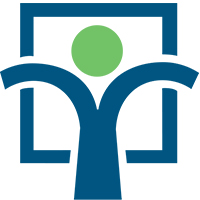
Effective and equitable taxation requires a defined tax base. In Canada, income taxes are levied from a ësource'. The Income Tax Act (the Act) does not define ëincome' anywhere- it has always been based on the source concept.
Segregating income by source was first conceived in the United Kingdom in a piece of legislation titled Addington's Act of 1803. This legislation allowed taxpayers to file separate returns for each source of income so that no single government official would know the total of each person's income.
The distinction between capital (the source of income) and income itself was explained by Justice Pitney of the United States in Eisner v Macomber (1919):
"The fundamental relation of ëcapital' to ëincome' has been much discussed by economists, the former being likened to the tree or the land, the latter to the fruit or the crop; the former depicted as a reservoir supplied from springs, the latter as the outlet stream, to be measured by its flow during a period of timeî.
Capital gains or losses arise from the sale or disposition of the source itself.
Section 3 of the Act is unavoidably tautological: "The income of a taxpayer for a taxation yearÖis the taxpayer's income for the yearî. Sources of income are listed (office, employment, business, property, and capital gains), but they are not exhaustive. Thus, Section 3 states that any other source is also taxable.
Income from each source is determined by:
a) Characterizing receipts as either income or capital;
b) If income, classifying it by source;
c) Deducting expenses applicable to each source to establish net income; and
d) Aggregating the various sources of net income per Section 3.
As a result of various government social policies and objectives the source doctrine is not completely followed in every circumstance though. For example, Section 12 lists specific inclusions and Section 81 specific exclusions.
The source doctrine does not include gambling gains or gifts and inheritances in income. The reason for this is that these represent non-recurring amounts or the transfer of old wealth; according to the source doctrine, income involves the creation of new wealth, and these do not stem from a productive source.
A residual category of exclusion, called ëwindfall gains' has proven problematic in Canadian tax jurisprudence. According to the ëSurrogatum Principle', another British legal doctrine adopted by Canada, amounts received in place of income from a source may be included in income. For example, amounts received as civil damages, or for breach of contract or tort can be classified as income (legal rights to income stemming from a source).
Greer Jacks is updating jurisprudence in the EverGreen Explanatory Notes, an online research library of assistance to tax and financial professionals in working with their clients. His subject is a bitterly disputed, and expensive one and he reflects on his experiences in reading recent cases.
Additional Educational Resources: Evergreen Explanatory Notes and DFA-Tax Services Specialist Designation
NEXT TIME: A PLEA FOR TAXING CONSISTENCY: Two examples will show the difficulty that Canadian courts have had in attempting to apply these principles of taxation.


